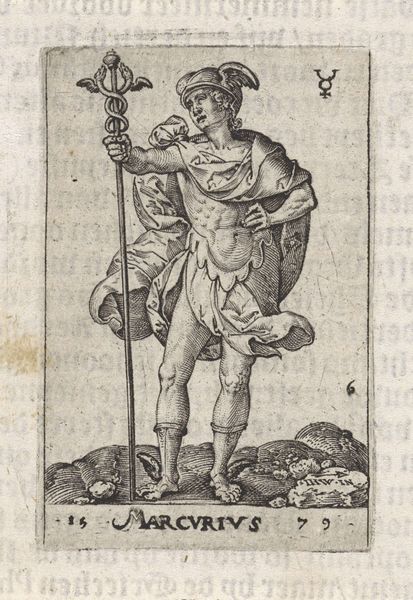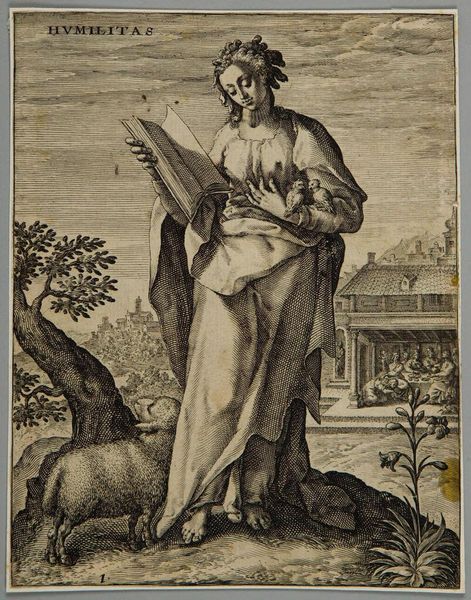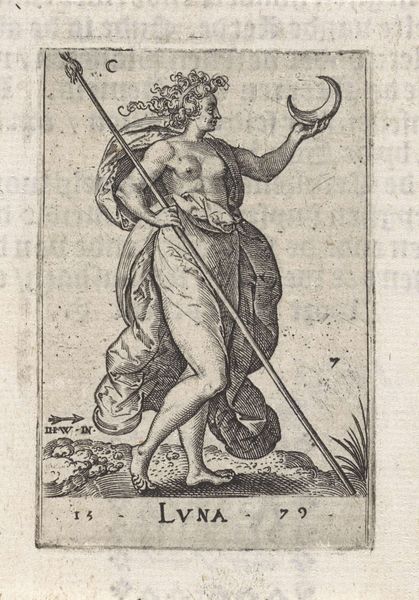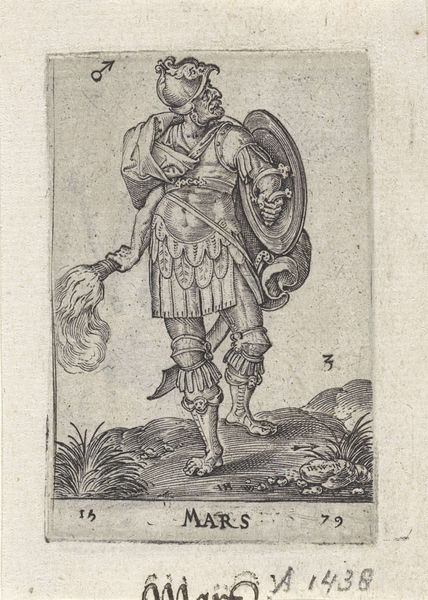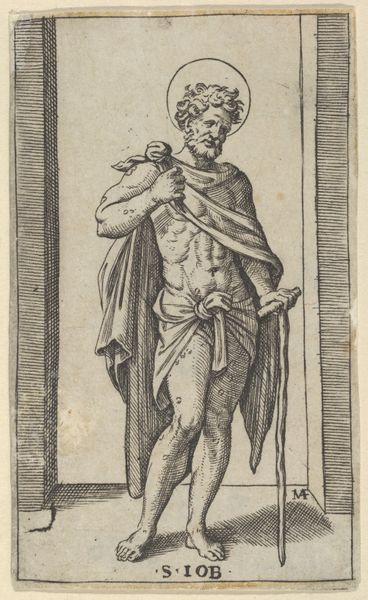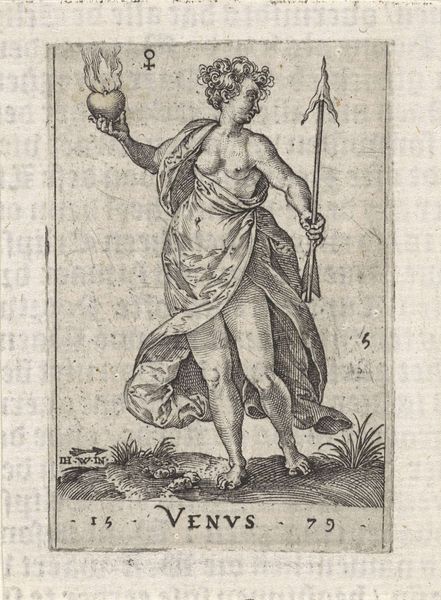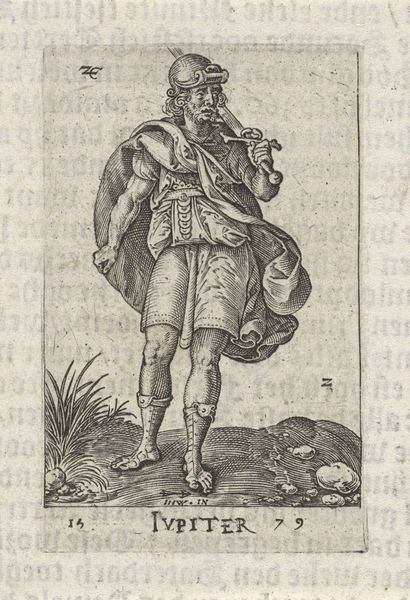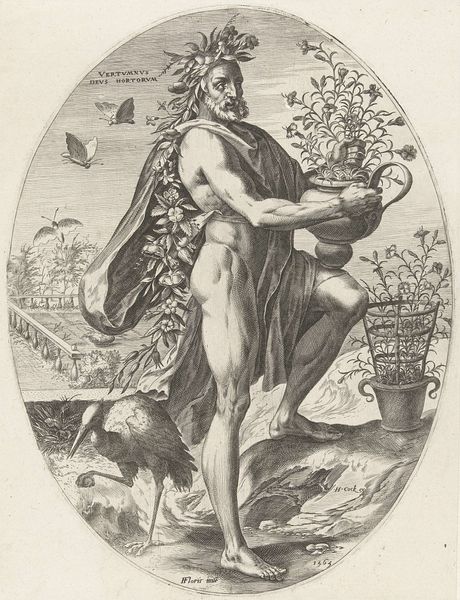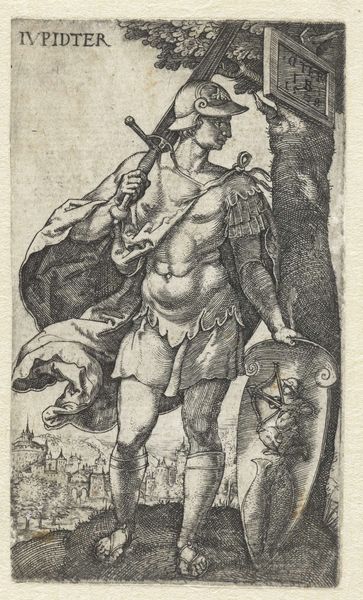
print, engraving
#
allegory
# print
#
mannerism
#
history-painting
#
nude
#
engraving
Dimensions: height 57 mm, width 38 mm
Copyright: Rijks Museum: Open Domain
Curator: This engraving, called "Kennis," meaning knowledge in Dutch, was created between 1579 and 1609. The artist, Wierix, masterfully captured the ideals of the late 16th century. Editor: My first thought? There’s something profoundly unsettling about this idealized nude figure, bathed in this strangely clinical, monochrome light. She embodies power, maybe even dominance, yet her expression feels almost melancholic, or perhaps wary. The level of detail is gorgeous but the tone is unnerving. Curator: Precisely! The Mannerist style allows Wierix to convey multiple layers of meaning simultaneously. Note how she holds a book in one hand, symbolic of learning, while the other rests on a vase overflowing with flowers. These symbols point to the fertile ground of intellectual pursuit. Editor: I wonder, though, who gets to define that "knowledge"? Is it accidental that this figure, likely based on Greco-Roman ideals, appears both vulnerable and hyper-sexualized? Consider how knowledge and the female body have historically been policed and controlled in Europe. Is the artist celebrating the figure's enlightenment or complicit in her objectification? Curator: It's true. One must examine the role of women during this era, navigating the expectations and restrictions of the time, even when embodied as an allegorical figure of “knowledge”. And that slightly averted gaze suggests she holds something back, perhaps the unspoken or unspeakable knowledge that women held at the time. Editor: Her detachment becomes even more poignant, seeing it in the context of colonial expansion. Was knowledge also being plundered, redefined and forced upon subjugated people across the globe at the time? How does her nudity, coupled with those lilies, complicate purity with blatant worldly knowledge and power? Curator: These are astute observations. The lily, after all, is associated with both purity and the Virgin Mary, adding layers of complexity to this representation. The knowledge she embodies might be considered divine or inherently good, but as we've discussed, there's an uneasy feeling that subverts any singular meaning. Editor: Exactly. Examining "Kennis" challenges viewers to critically evaluate who authors knowledge, who it serves, and who remains in the margins. Art like this provides critical tools to unpack the intricacies of visual language and its enduring impacts.
Comments
No comments
Be the first to comment and join the conversation on the ultimate creative platform.

